RLS in Edinburgh | Homes & Haunts | Fictional Edinburgh | Gothic Edinburgh
RLS was born in 8 Howard Place, Edinburgh. The family moved to Inverleith Terrace in January of 1851, and then to 17 Heriot Row in 1857.
17 Heriot Row is now a privately owned home. However, Stevenson House is available as a Bed and Breakfast and a unique venue for hire.

For more information contact:
Telephone: +44 (0 )131 556 1896 +44 (0 )131 556 1896
Email: mail@stevenson-house.co.uk
Edinburgh was Robert Louis Stevenson’s birthplace. He lived there on and off for the first 29 years of his life, and continued to visit the city until 1887, after which time he left Scotland, and Europe, forever.
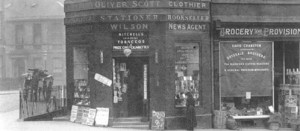
This stationer’s shop in Antigua Street, Leith Walk, is where Stevenson bought cut-out figures for his toy theatre. He later wrote about the delight he took in playing with the theatre in his essay “A Penny Plain and Twopence Coloured” (1884), later included in Memories and Portraits (1887). Skelt’s Toy Theatres (the brand RLS used) were made of cardboard. The characters – which cost a penny (for those that the child could colour in) or twopence (for the characters which were already coloured in) and the plays he put on like Aladdin and Robin Hood stimulated his imagination. Stevenson reminisced about the shop, writing, “That shop, which was dark and smelt of Bibles, was a loadstone rock for all that bore the name of boy. They could not pass it by, nor, having entered, leave it” (“A Penny Plain and Twopence Coloured”, in Memories and Portraits [New York: Charles Scribner’s and Sons, 1895] p. 216).

Colinton Manse, by the Water of Leith, was home to Stevenson’s grandfather, Lewis Balfour. Balfour was the minister of Colinton. As a child, Stevenson would often visit here. He developed a strong bond with his Aunt Jane Whyte Balfour, who lived at the manse. He also played here with his cousins. The manse’s garden and his memories of playing there inspired many of the poems in A Child’s Garden of Verses (1885). Stevenson also wrote about his experiences at Colinton in “The Manse” (1887), later included in Memories and Portraits (1887):
“It was a place in that time like no other: the garden cut into provinces by a great hedge of beech, and over-looked by the church and the terrace of the churchyard, where the tombstones were thick, and after nightfall ‘spunkies’ might be seen to dance at least by children; flower-plots lying warm in sunshine; laurels and the great yew making elsewhere a pleasing horror of shade; the smell of water rising from all round, with an added tang of paper-mills; the sound of water everywhere, and the sound of mills – the wheel and the dam singing their alternate strain; the birds on every bush and from every corner of the overhanging woods pealing out their notes until the air throbbed with them; and in the midst of this, the manse. I see it, by the standard of my childish stature, as a great and roomy house. In truth, it was not so large as I supposed, nor yet so convenient, and, standing where it did, it is difficult to suppose that it was healthful” (“The Manse”, in Memories and Portraits [New York: Charles Scribner’s and Sons, 1895], pp. 107-08).

Stevenson studied at various schools in Edinburgh as a child. Due to poor health, however, his attendance was sporadic. In 1857 he went to school at 14 Canonmills, which was near to his second home on Inverleith Terrace. He also studied with private tutors on India Street and Frederick Street. Later, he attended Edinburgh Academy on Henderson Row. Edinburgh Academy still stands, and you can visit the site of the old schoolhouse on Canonmills where a plaque commemorates RLS’s attendance.
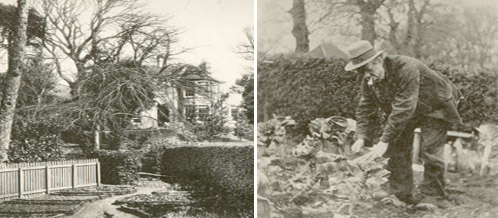
In 1867, RLS’s father leased Swanston Cottage, a property just outside of Edinburgh. The family often stayed there, and RLS wrote about the gardener Robert Young and the shepherd John Tod at Swanston in “An Old Scotch Gardener” (1871) and “Pastoral” (1887). These essays were later included in Memories and Portraits (1887). On the 26th of June 1870, Stevenson visited Rosslyn Chapel, which is near to Swanston cottage. He also used Swanston in his fiction: it was Flora’s home in St Ives (1898).
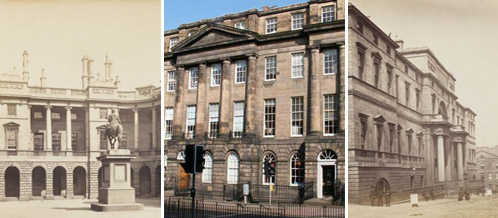
In 1867, RLS began his studies in engineering at Edinburgh University. By 1871, however, he was studying law, despite the fact that his real ambition was to be a writer. During 1872 and 1873 he worked in the law offices of Skene and Peacock at 5 Albyn Place. In July of 1876 he was called to the bar.

As a young man, Stevenson often frequented the many bars Edinburgh had to offer, particularly pubs on the Lothian Road and Rutherford’s Bar on 3 Drummond Street. It was a pub in Advocate’s Close where RLS and friends like Bob Stevenson and Charles Baxter created the LJR League (Liberty, Justice, Reverence). The club’s tenet was “disregard everything our parents taught us”. Indeed, although Stevenson was known to frequent graveyards when he was unhappy (see for example “Old Mortality”, in Memories and Portraits [1887]), aside from pubbing, he knew how to enjoy the city. For example, he went ice-skating on Duddingston Loch, and had snowball fights with fellow students at Edinburgh University. He also often visited Portobello in Edinburgh (sometimes staying with his cousin Bob Stevenson at Bob’s family home on 21 Pitt Street), a beach resort along the waters of the Firth of Forth.
Edinburgh: Picturesque Notes (1878) is a series of essays in which RLS describes different areas of Edinburgh: the Old Town, the Parliament Close, Greyfriar’s Kirkyard, the New Town, the villas in Morningside, Calton Hill and the Pentlands. The images below, of the Martyr’s Monument and Fairmilehead to the Pentlands, are described in the essay. The essay suggests the importance of the Edinburgh countryside to RLS – for him both the bustle of the high street and the beauty of the Pentland Hills contributed to his experience of Edinburgh. Indeed, RLS would often explore the country surrounding Edinburgh, walking to Glencorse Church with his father in 12 May 1872, and visiting it again on 4 July 1875. To find out more about Edinburgh when Stevenson lived there, see also Victorian Edinburgh.
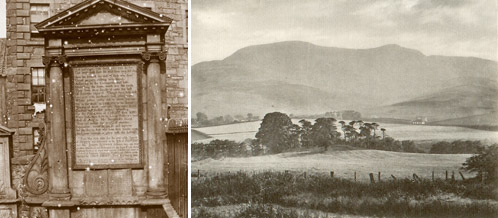
W.E. Henley was admitted to Edinburgh’s Royal Infirmary Hospital to be treated for his ongoing illness by the renowned surgeon Joseph Lister. It was here in 1875 that RLS first met Henley. Initially, the men were excellent friends who collaborated on Deacon Brodie (1880), Beau Austin (1884) and Admiral Guinea (1884). In 1888 they quarreled and their friendship never fully recovered.
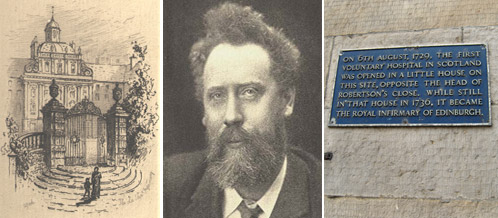
Images 1 to 3, 8 and 14 courtesy of Alan Marchbank
Image 4 courtesy of the Writers’ Museum
Images 6 and 7 from RLS, A Child’s Garden fo Verses, illus. by E.Mars and M.H Squire (Chicago: Rand Mcnally, 1902)
Images 11 and 12 from The Robert Louis Stevensons Originals by E.Blantyre Simpson (London: T.N.Foulis, 1912), pp.40 and 48
Images 19 and 20 courtesy of Rare Books and Special Collections, Thomas Cooper Library, University of South Carolina
Images 9, 10, 13, 15, 18, and 22 courtesy of Capital Collections
